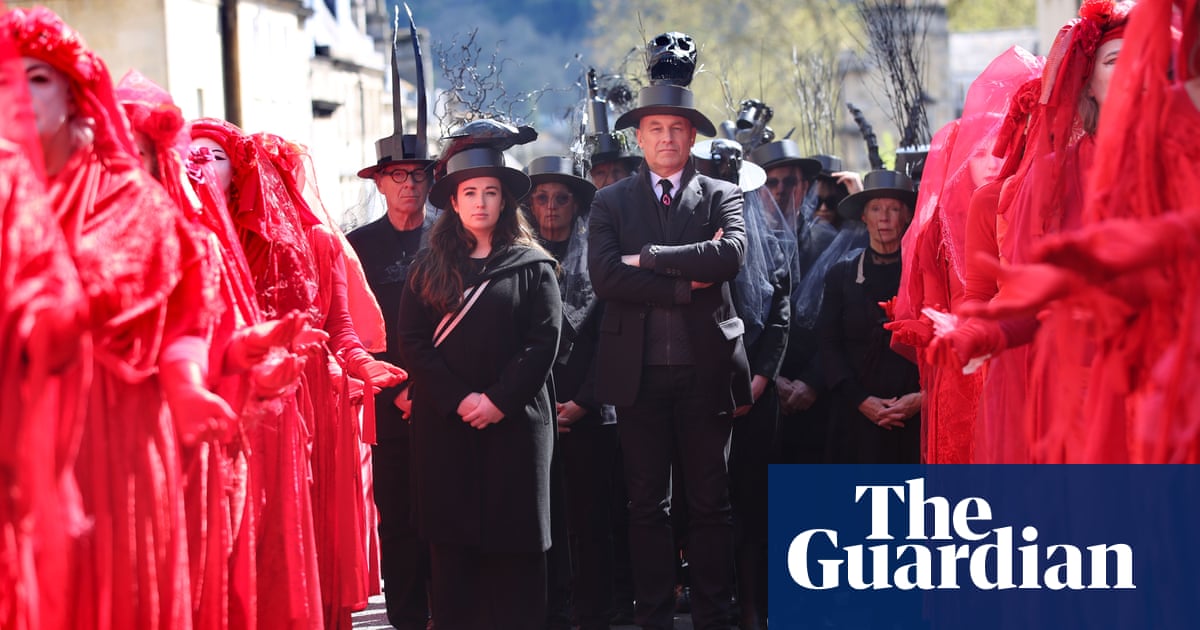Everyone loves bees and butterflies, but now moths are coming into the spotlight (as long as they donât fly around it).
The moth expert Charles Waters has seen a surprisingly rapid increase in interest in moths from the younger generation as, he believes, people become more aware of their beauty and diversity, as well as their importance as pollinators.
âMoths are more significant pollinators because thereâs so many of them. In the UK, there are 59 butterfly species, but there are 2,500 moth species,â he said.
At the Moonshadow moth garden at the Hampton Court Palace garden festival, which began this week, he showed off a variety of caterpillar- and moth-friendly plants.
British native wildflowers which moths love include wild strawberry, scabious and knapweed. The Moodshadow garden also boasted a large and colourful buddleia bush that is enjoyed by butterflies and moths alike, and has âmessyâ areas with long grass, and wood and twigs for the moths to rest on.
âIâm secretary of the Sussex Moth Group,â Walker said, âand the number of members is growing quickly, and thatâs because people are much more aware and much more interested, which can only be a good thing.â The increase includes young people, too. âThe age range used to be old fuddy-duddies â I would say like me but Iâm only 65. There are some 85-year-olds who have been catching moths for 50 years but we are now getting an influx of younger people.â
Moths have often been ignored in favour of other pollinators, according to Walker, as they are largely nocturnal. They have also been unfairly maligned because of some particularly disliked species, such as clothes moths and box tree moths.
In fact only five species, out of the 2500, will eat fabric. âThen youâve got the box tree moths and the oak processionary caterpillars, which can cause allergic reactions, so itâs understandable people donât like those,â he added, âbut that is a tiny fraction of the huge number of species of moths we have.â
To demonstrate the diversity and number of moths, he set up a nonlethal moth trap in the grounds of Hampton Court Palace the night before the show which caught 400, including elephant hawk-moths and buff-tip moths. They were all released in a beautiful cloud.
He traps moths all over Sussex and has noticed their decline, which is largely due to habitat loss. Caterpillars feed on native wildflowers and grasses, which have been stripped from the landscape by intensive farming and infrastructure building. âThey are faring at least as badly if not worse than other pollinators,â said Waters.
after newsletter promotion
Studies have found the overall number of moths in the UK has decreased by 33% since 1968. Some species have faced steep declines. The garden tiger is down 90% since 1968, the blood-vein has declined by 59%, and the white ermine numbers have plummeted by 71%. Conservation efforts are starting to show glimmers of hope for some species.
Trees are very important for moths, Waters added: âOak trees are the best trees for the moths because they are well established in the UK and have been for hundreds of thousands of years. You ideally want a mix of trees, shrubs, wildflowers. Theyâll all have their moth species, which have a caterpillar which prefers to feed on it.
âWeâve got to try to reverse this decline, and making your garden a bit more moth friendly can really help as the decline is mostly driven by habitat loss.â
Saving the moths also means protecting Britainâs birds, which feed on the caterpillars and eggs.
âAs well as being important pollinators they provide food for birds,â said Waters. âSo without the insects youâll lose the birds and the ecosystem breaks down. So I think thatâs the awareness that weâve got to try to bring forward.â



